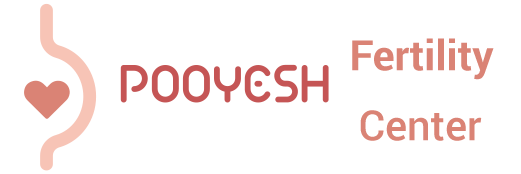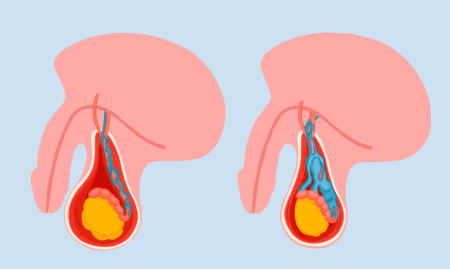Microsurgical Varicocelectomy
Pooyesh Fertility Clinic
Microsurgical Varicocelectomy
What is Varicocele?
- Varicocelectomy refers to the surgical removal or ligation of dilated veins within the scrotum, a condition known as varicocele.
- Varicoceles are more common on the left side of the scrotum. They are often asymptomatic, but in some cases may cause pain that can range from sharp and severe to a dull, dragging discomfort in the testicular area. The pain usually worsens with standing or physical activity, tends to increase throughout the day, and improves when lying down.
Prevalence of Varicocele
- About 15% of men in the general population have a varicocele, though it is uncommon in boys before puberty.
- The prevalence is higher among infertile men: about 35% in men with primary infertility and 75–80% in men with secondary infertility.
Causes of Varicocele
- The exact cause of varicocele formation is not fully understood.
- It is believed to result from impaired blood flow in the veins that drain the testicles, or from malfunctioning testicular venous valves.
Diagnosis of Varicocele
- Varicocele is usually diagnosed during a physical examination, often with the Valsalva maneuver performed in the standing position by urologist.
- If the clinical exam is inconclusive, scrotal ultrasound may be recommended.
Treatment of Varicocele
- There is no effective medical therapy for varicocele.
- Surgical intervention is recommended when varicocele causes pain or infertility. The preferred approach is microsurgical varicocelectomy.
- During this procedure, the surgeon uses an operating microscope to make a very small incision (about one inch or less) in the groin area, carefully ligating the dilated veins.
- The microscope helps avoid injury to the testicular artery and assists in preserving lymphatic vessels, which reduces the risk of developing a postoperative hydrocele (fluid accumulation around the testicle).
- Microsurgical varicocelectomy is typically an outpatient procedure, allowing patients to go home the same day.
Advantages of Microsurgical Varicocelectomy
- Improved fertility potential: Studies show a significant improvement in fertility rates after surgery.
- Reduced pain and complications: Smaller incisions and precise technique lead to less postoperative pain and fewer complications compared to traditional surgery.
- Faster recovery: Most patients return to normal daily activities more quickly.
- Suitable for various cases: Effective for a wide range of patients, including those with severe varicoceles.
Steps of the Procedure
- 1 Anesthesia: General or local anesthesia is administered.
- 2 Incision: A small incision is made in the groin to access the spermatic cord.
- 3 Microsurgery: Using an operating microscope, the surgeon identifies and ligates the enlarged veins.
- 4 Closure: The incision is closed with sutures.
Indications for Surgery
- Infertility: Particularly in men with abnormal semen parameters due to varicocele.
- Chronic testicular pain: Persistent discomfort not relieved by conservative measures.
- Poor sperm quality: Surgery may improve sperm count, motility, and morphology.
- Hormonal impact: Studies show varicocele may cause reduced testicular volume, impaired Leydig cell function, and decreased testosterone levels. Repair can prevent progressive testicular damage.
- Improved pregnancy rates: Evidence suggests that varicocelectomy increases the likelihood of natural conception.
Preoperative Instructions
- Shower and shave the genital and abdominal area.
- Stop taking blood-thinning medications such as Aspirin, Warfarin, or Heparin (as directed by your doctor).
- Fast for at least 8 hours before surgery.
- Remove jewelry, watch, contact lenses, dentures, and other prosthetics before entering the operating room.
- Empty the bladder just before surgery.
- Inform your doctor or nurse if you smoke or use drugs; avoid smoking for at least 24 hours before surgery.
Postoperative Care
- Begin with liquids 6 hours after surgery; gradually resume a normal diet if tolerated.
- Take prescribed pain relievers and antibiotics as directed.
- Wear supportive, snug-fitting underwear.
- Mild swelling or firmness at the incision site is normal; apply cold compresses to reduce discomfort.
- Rest for 24 hours after surgery. Avoid heavy lifting for 2 weeks, and resume sports activities after about 4 weeks.
- Showering is allowed 48 hours after surgery; no dressing is needed afterward.
- Sexual activity may resume once the incision has healed and pain has resolved.
- Return for follow-up one week after surgery for wound assessment and suture removal.
- Contact your doctor immediately if you experience excessive bleeding, fever, or significant scrotal swelling.

